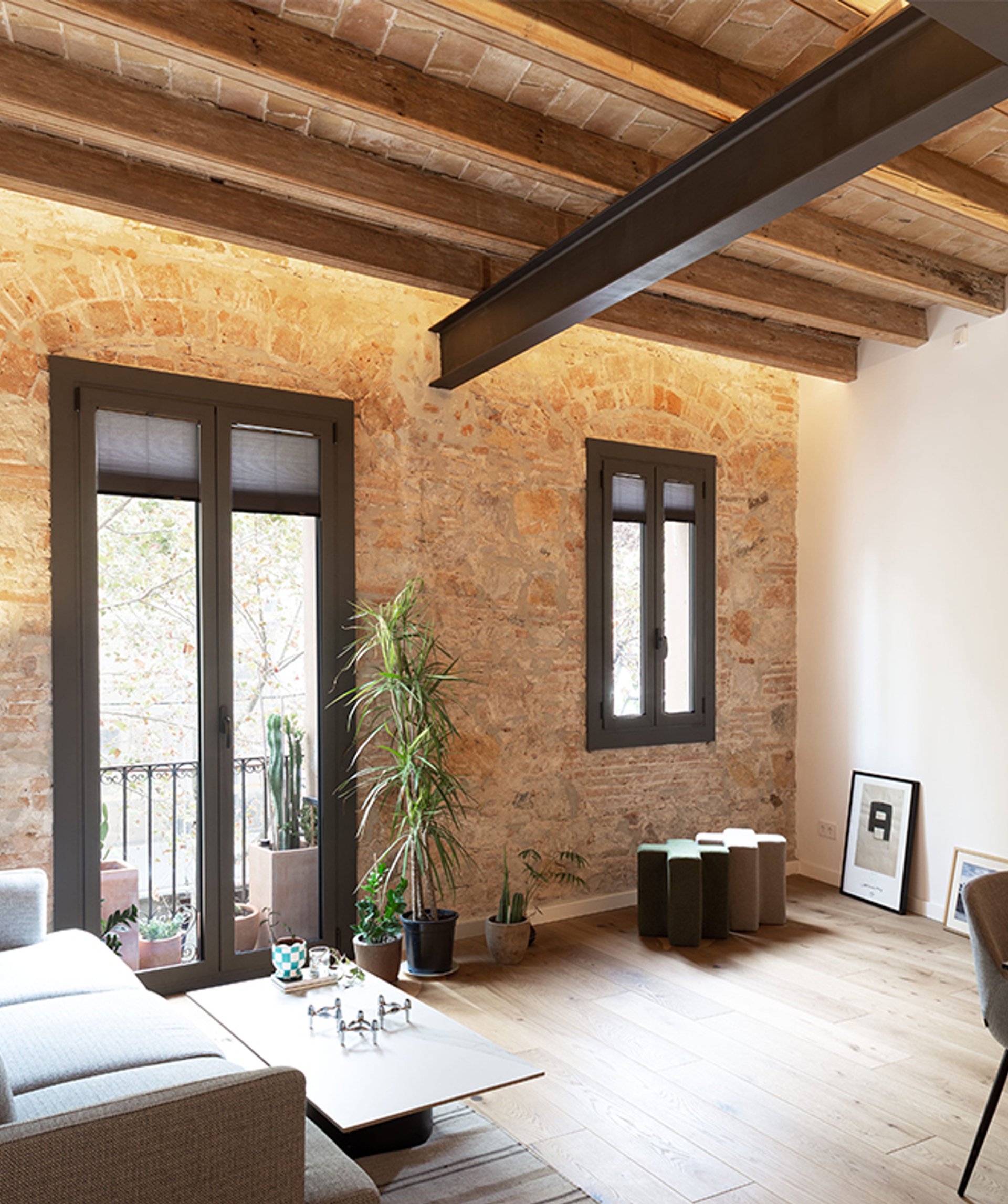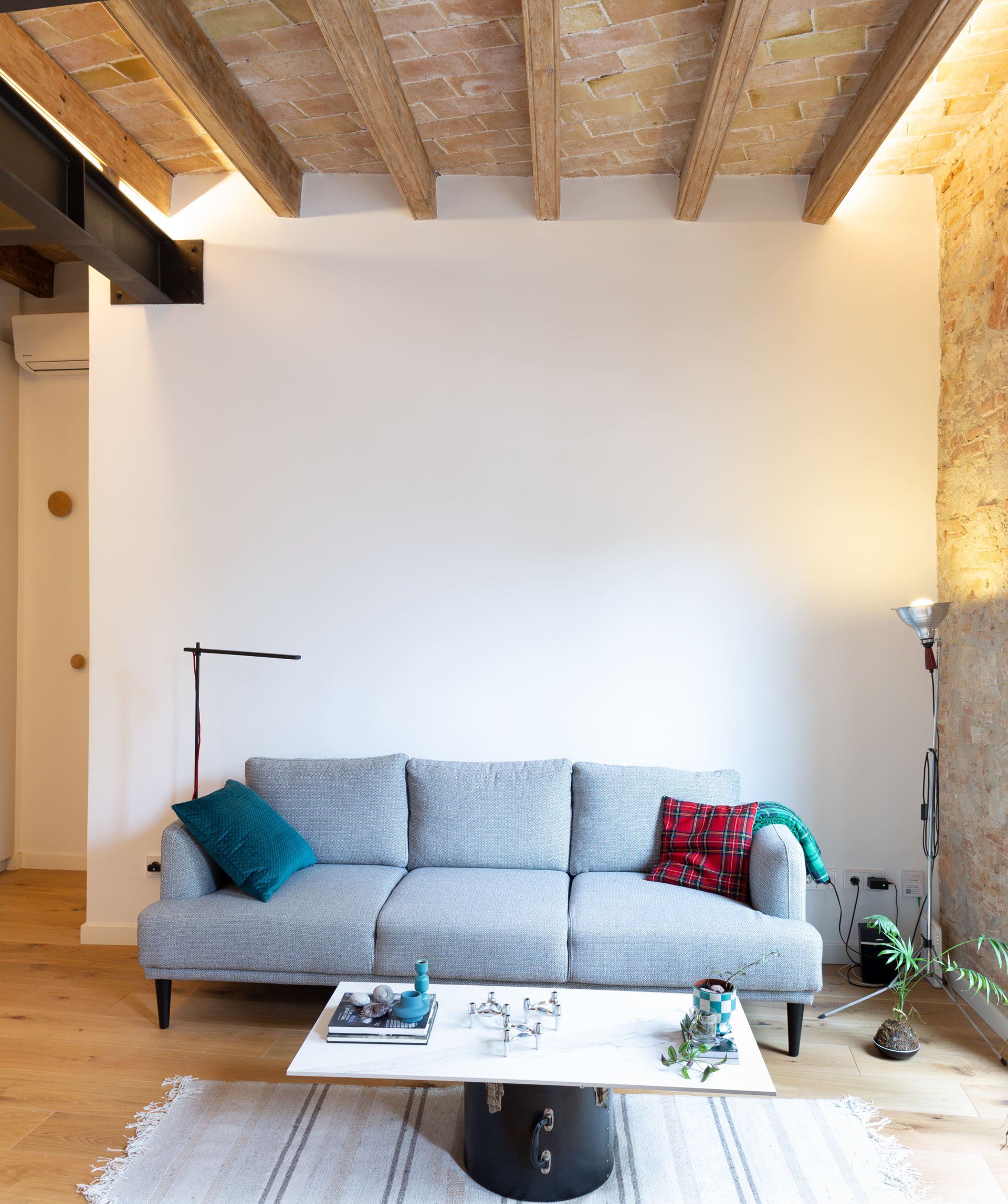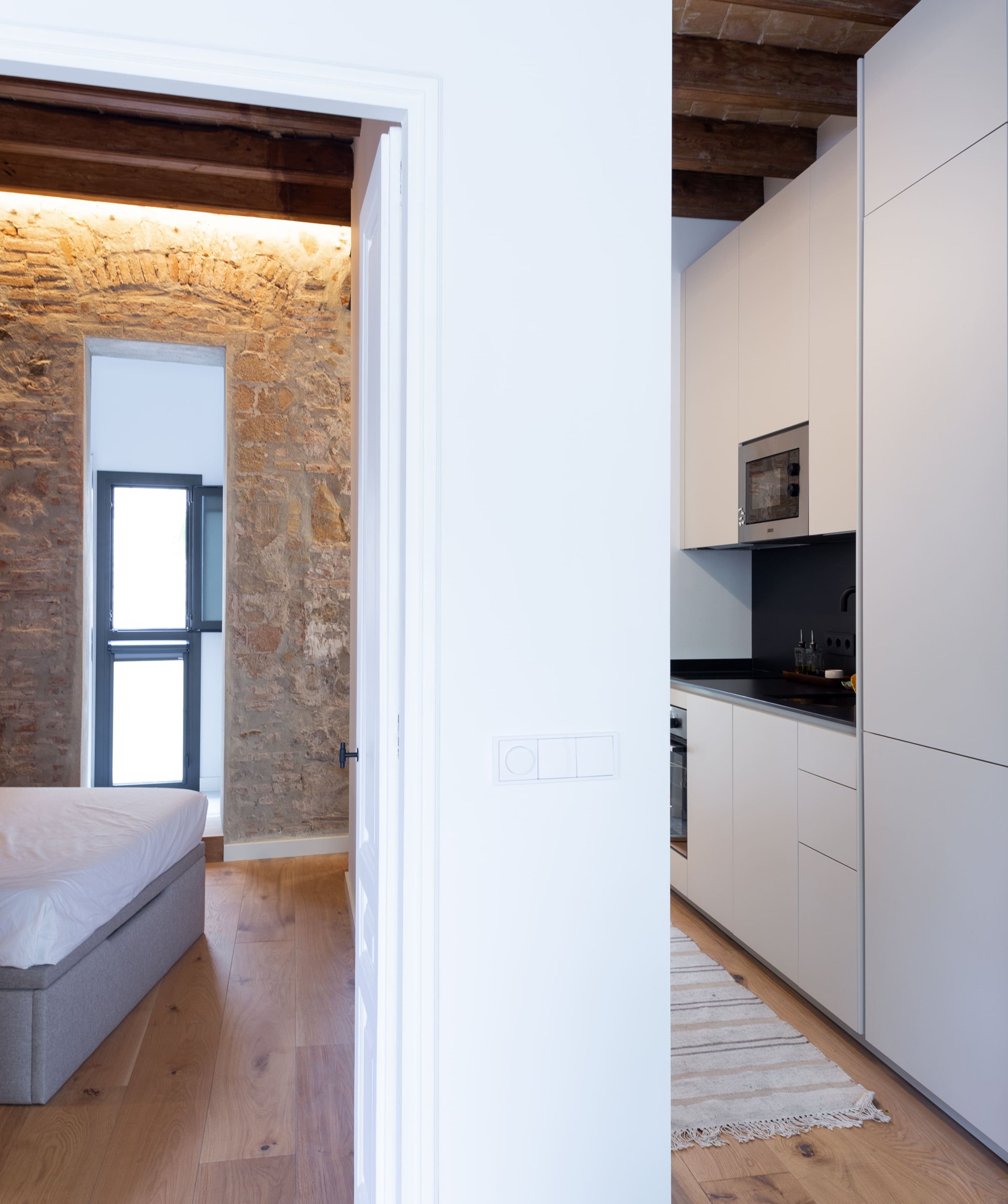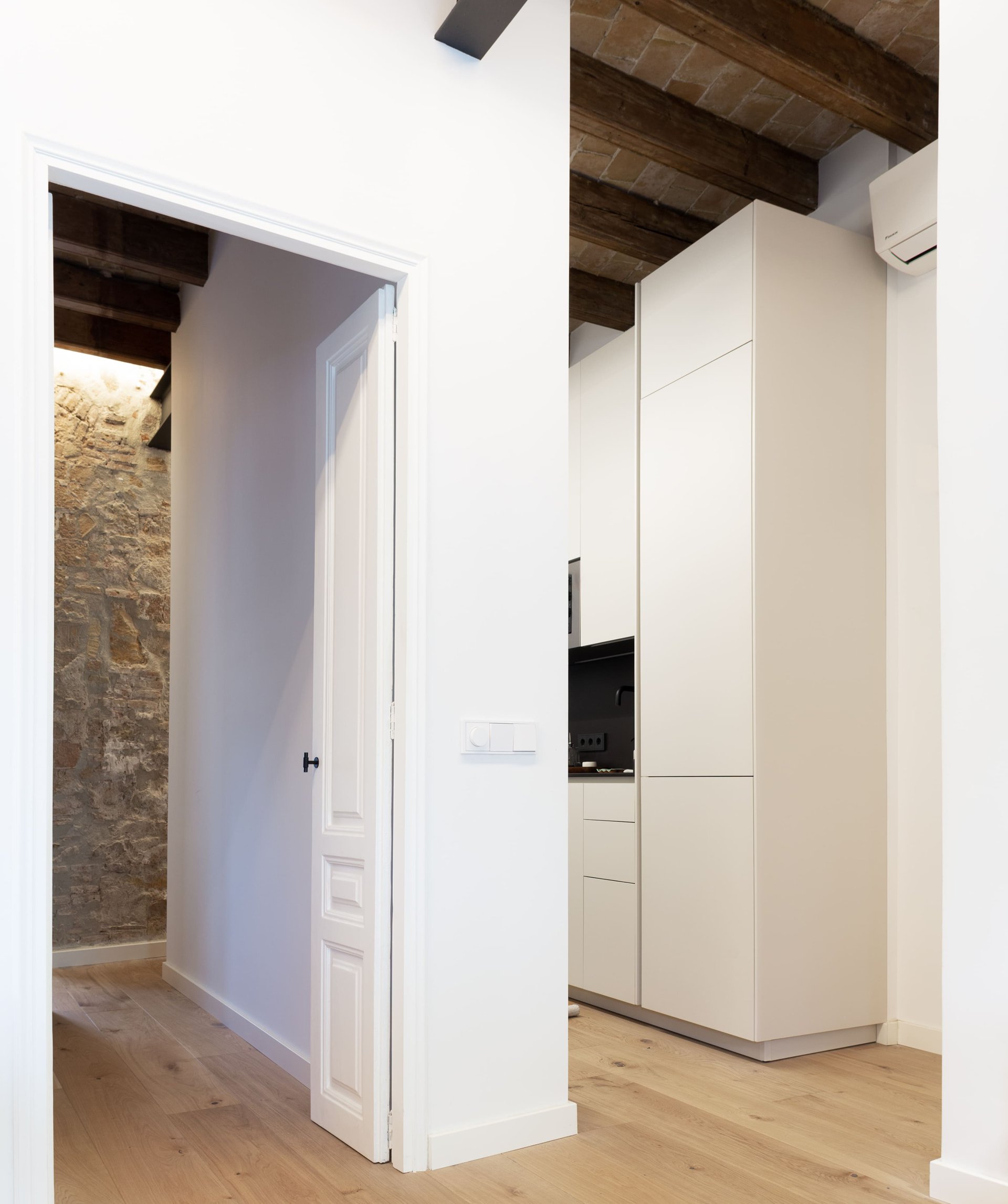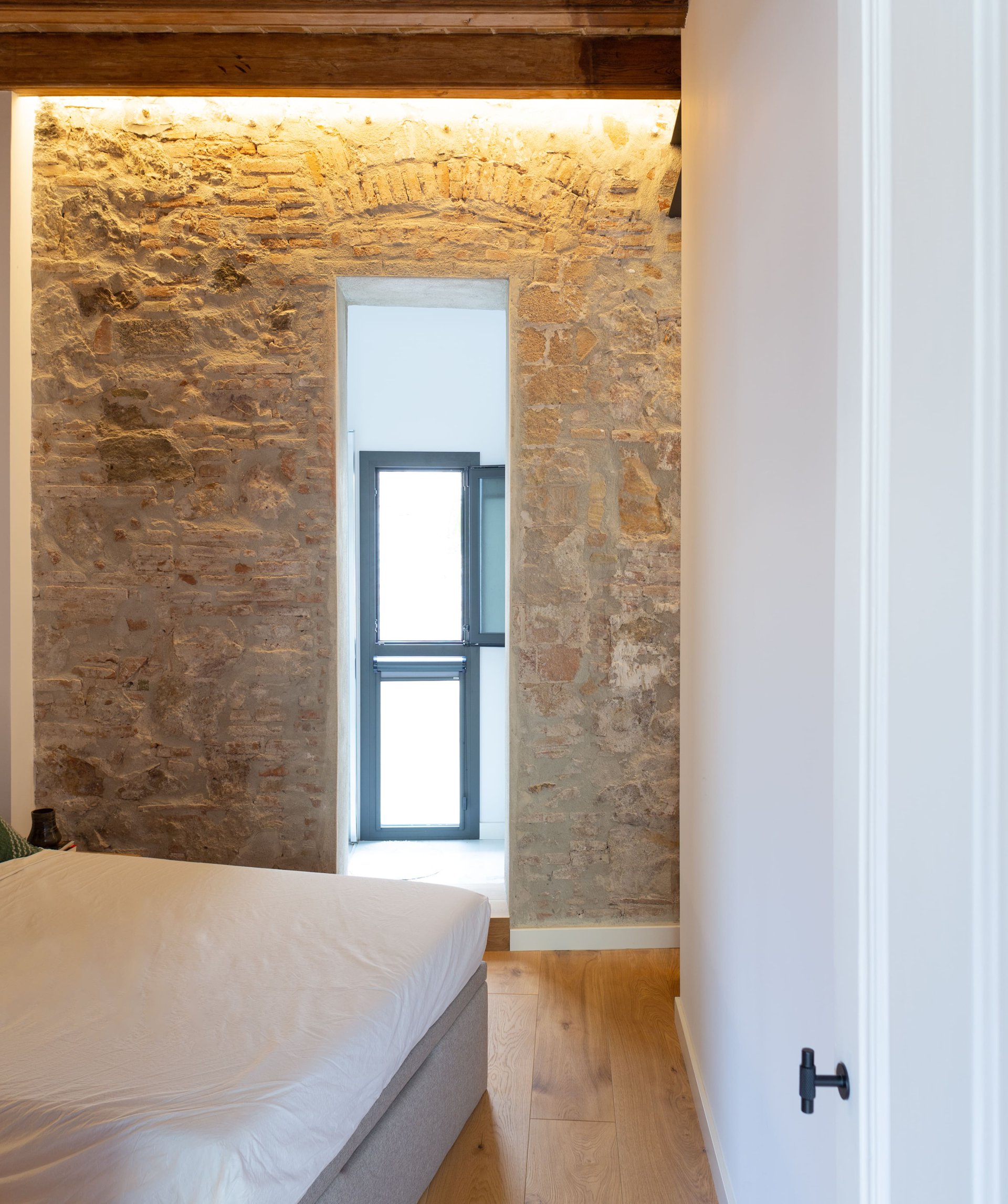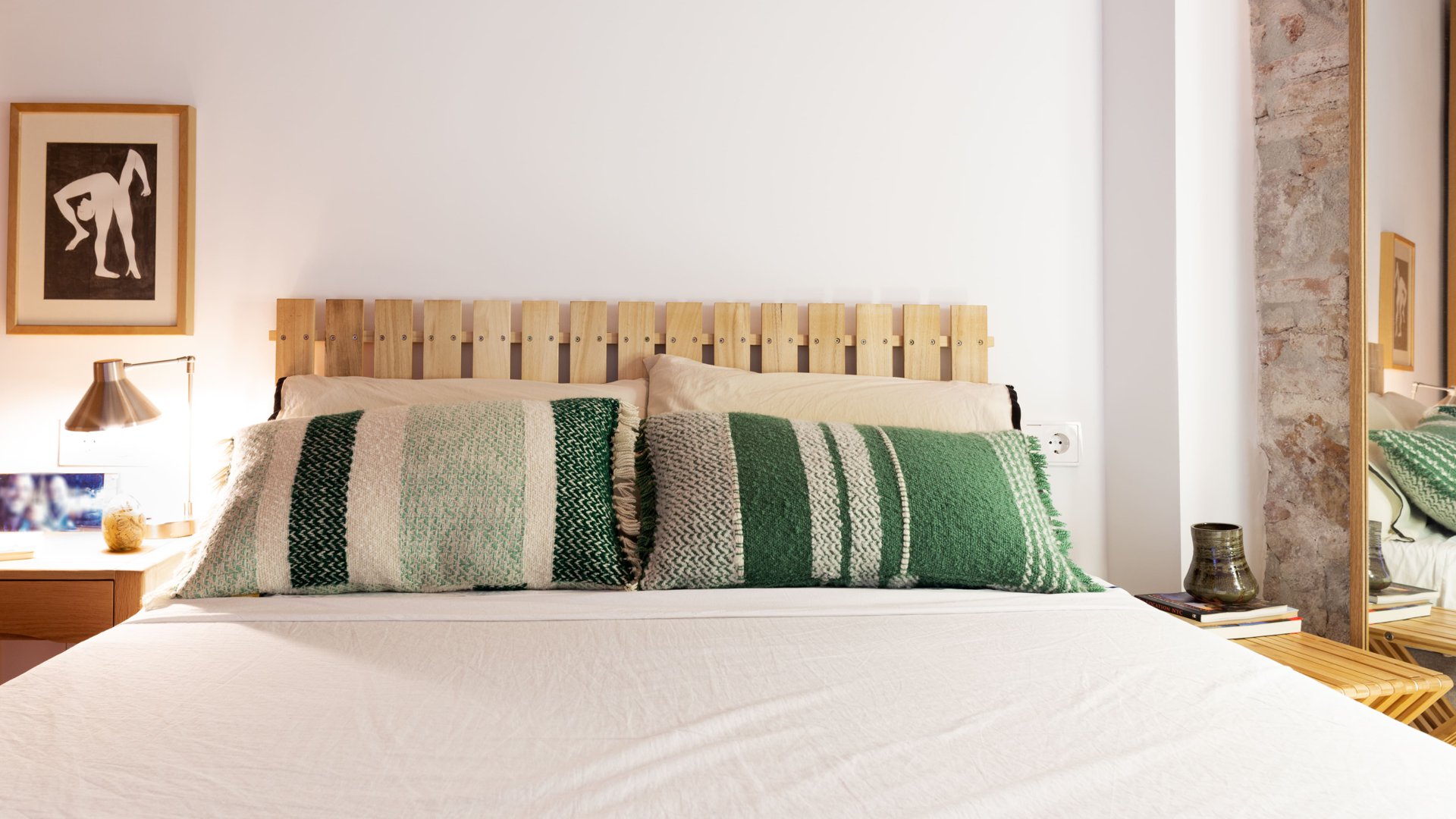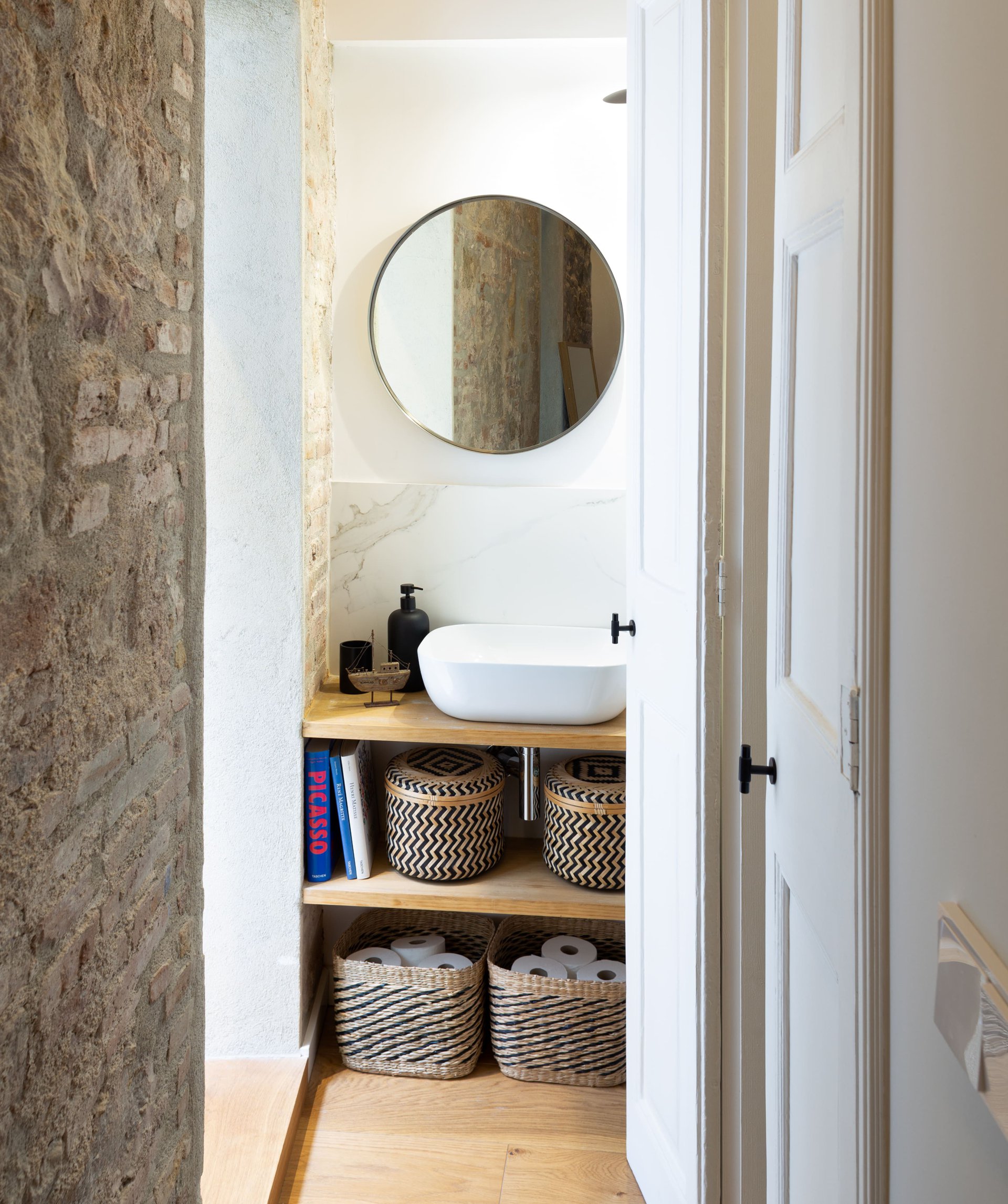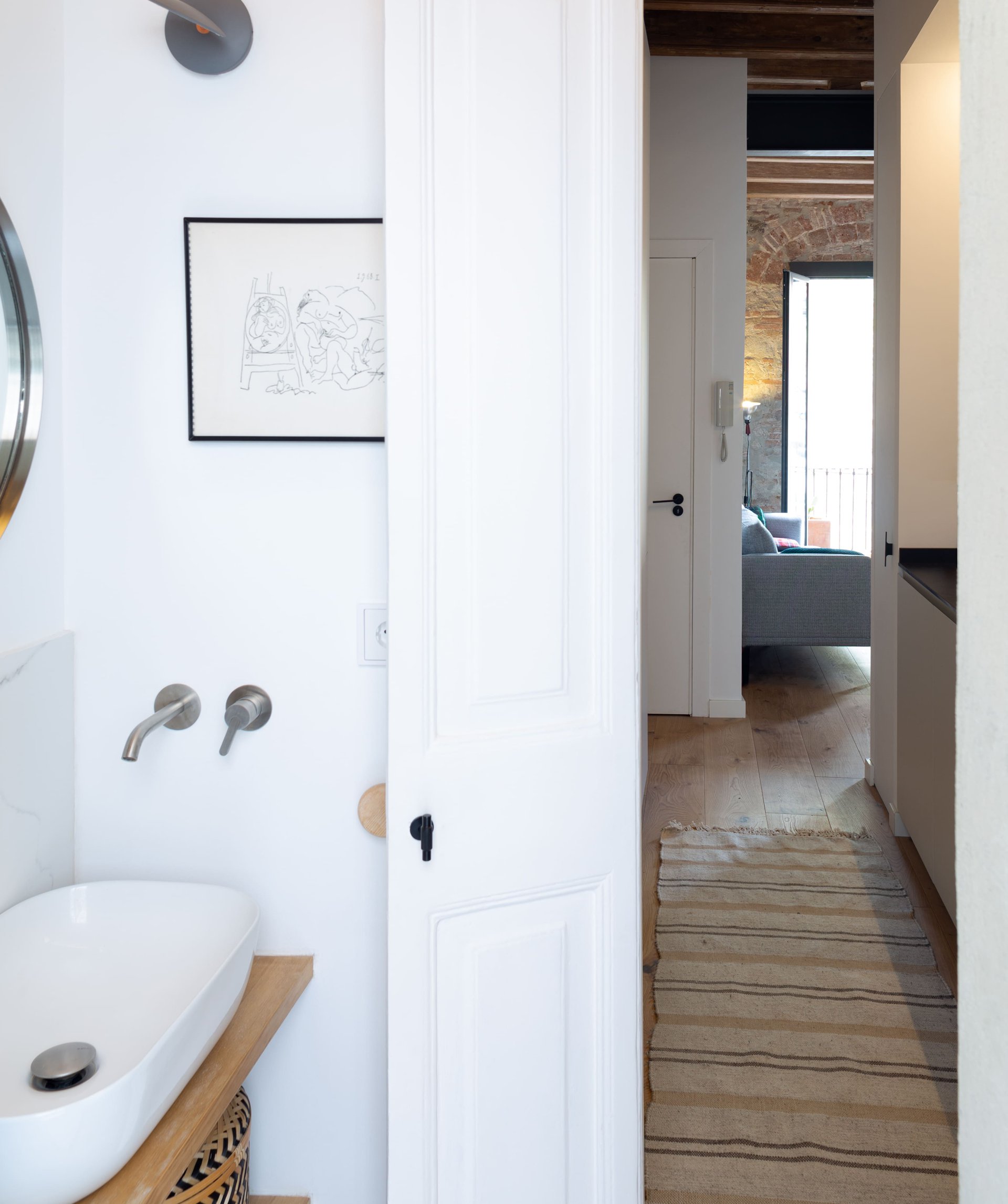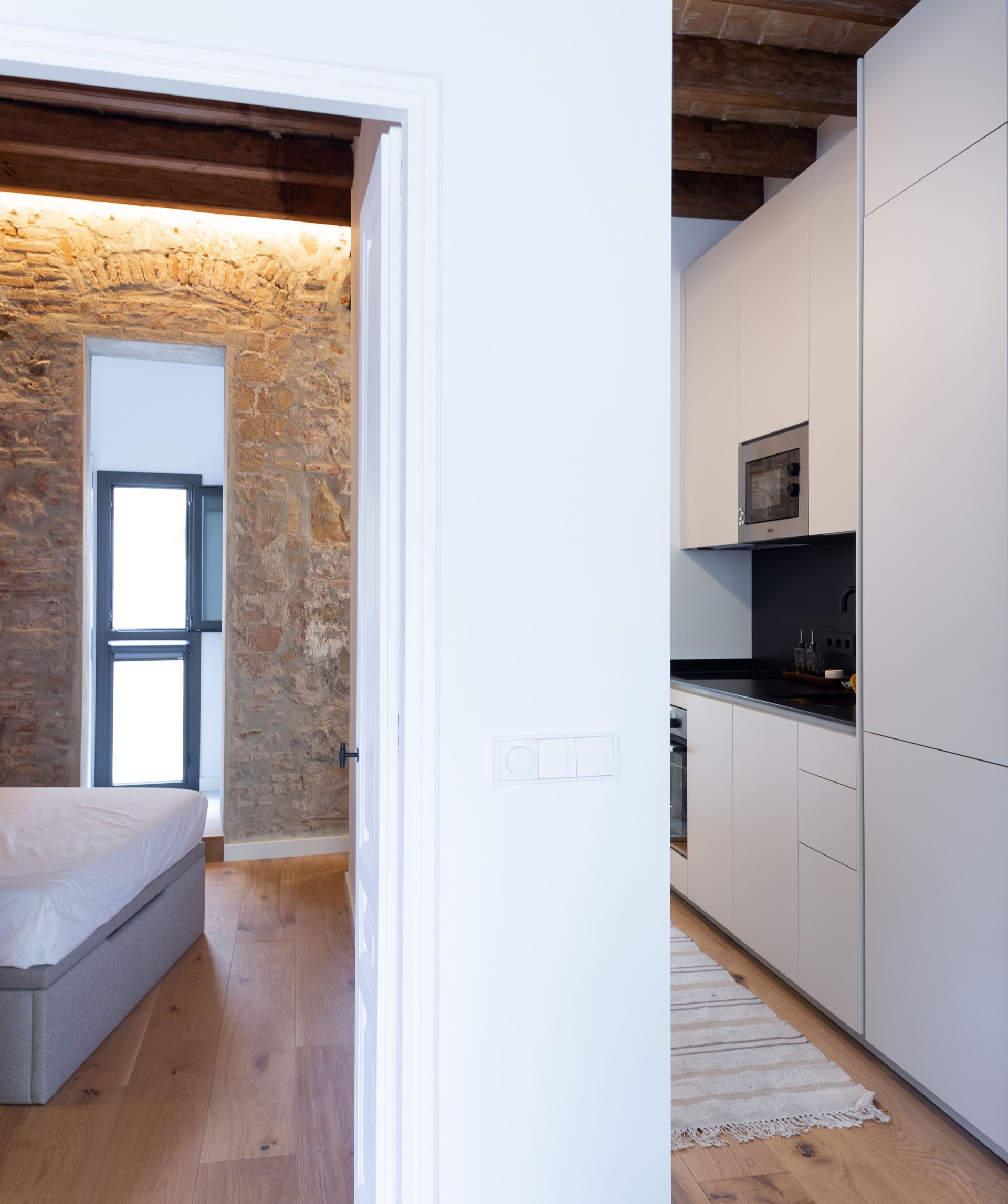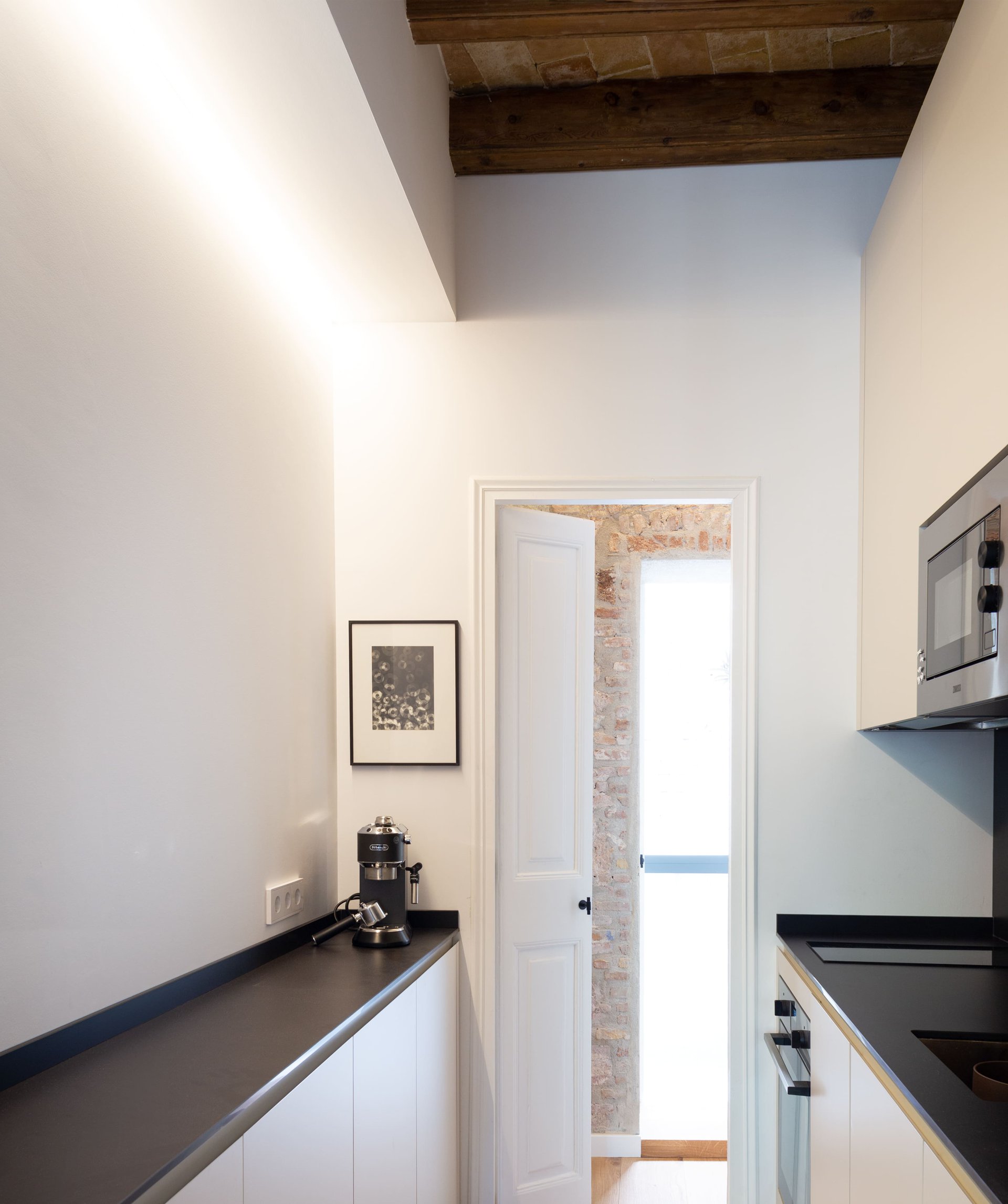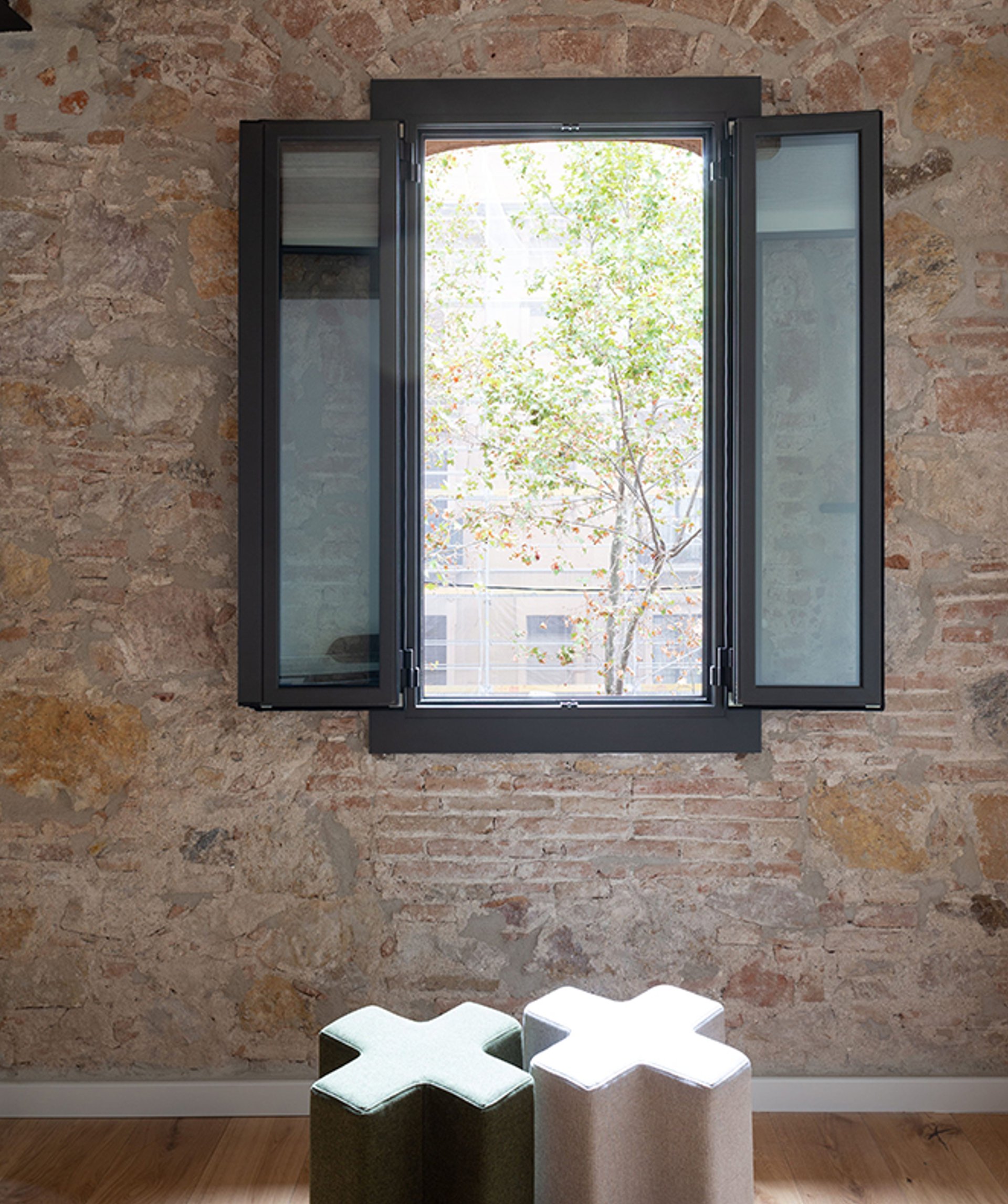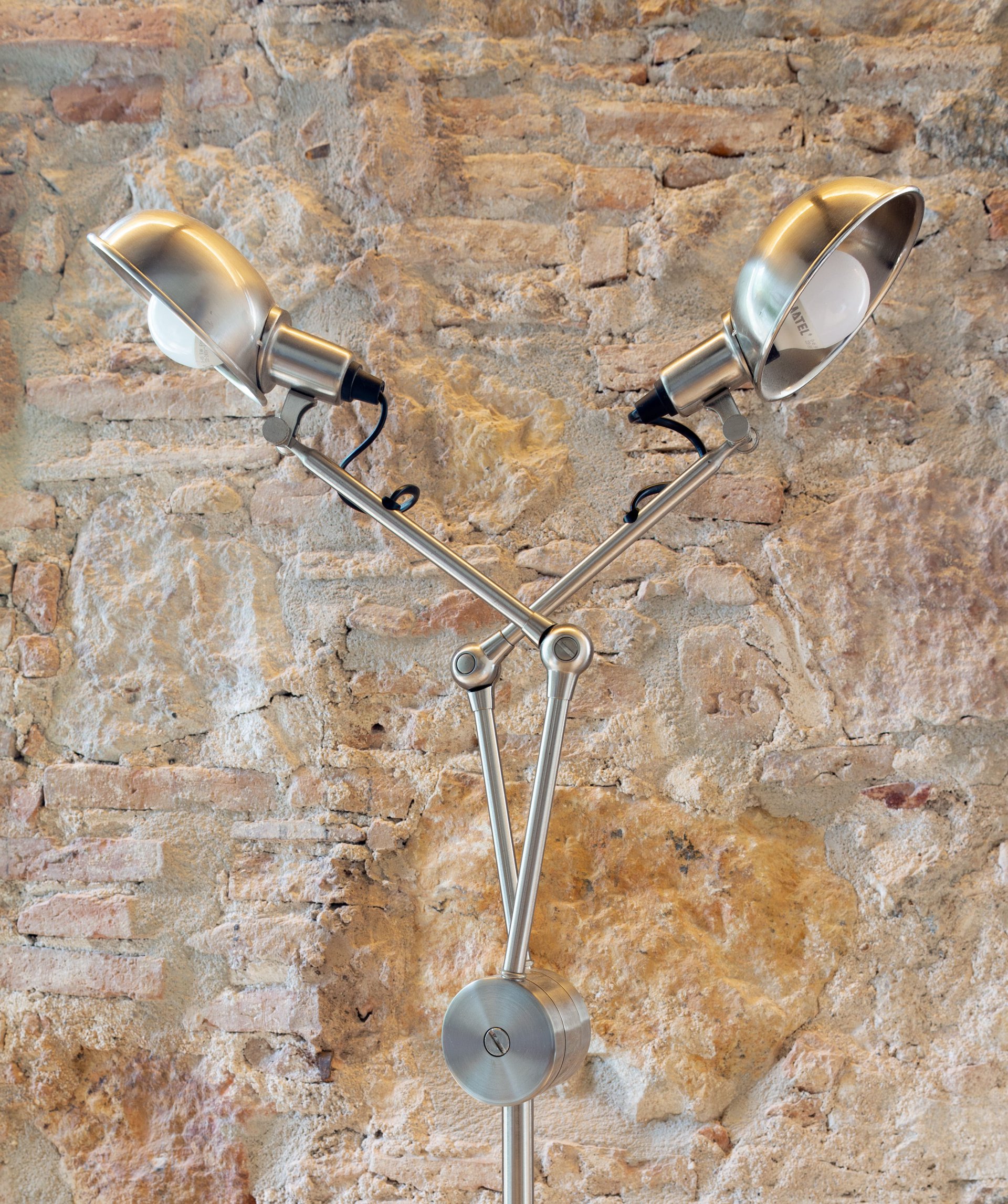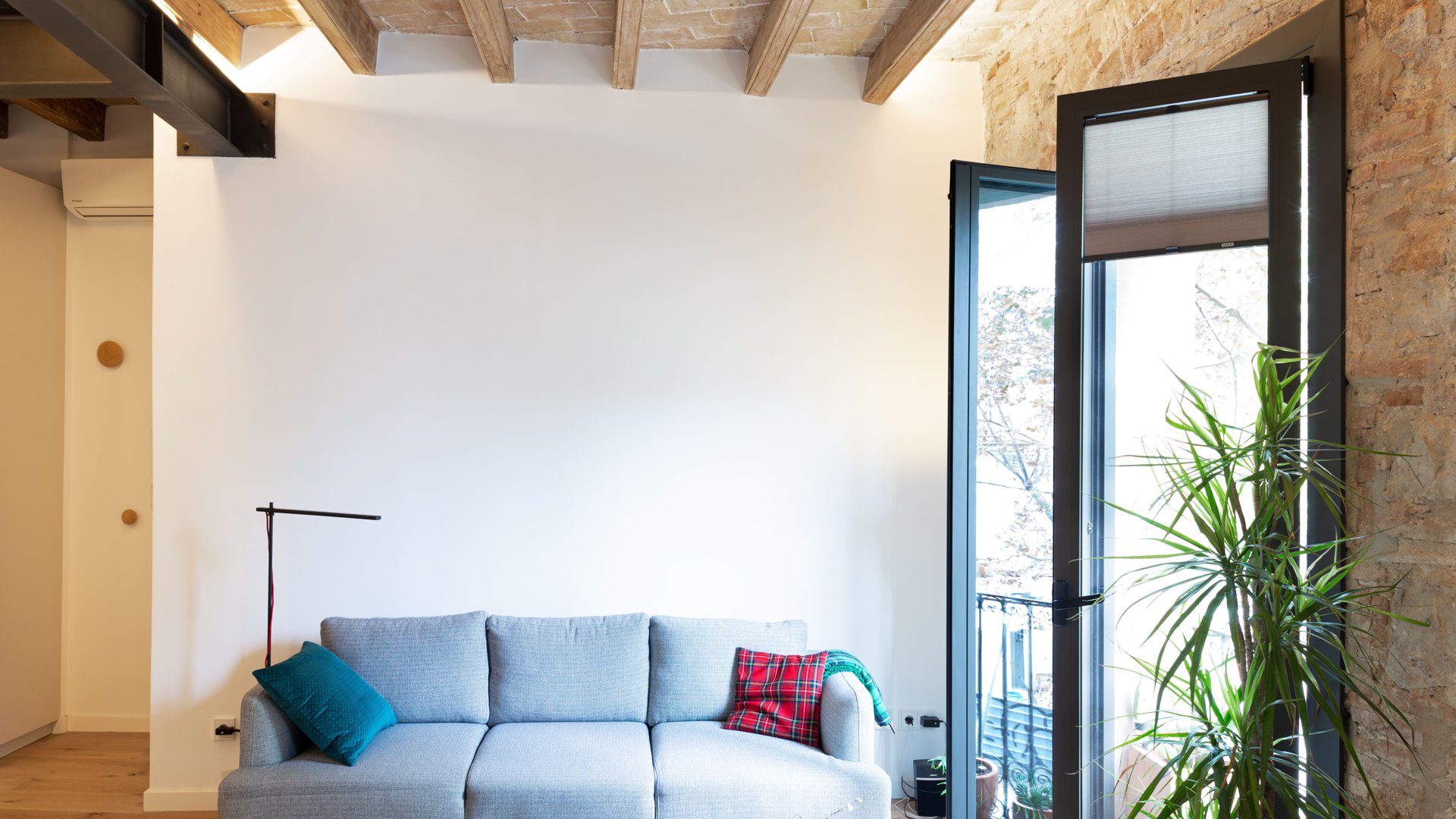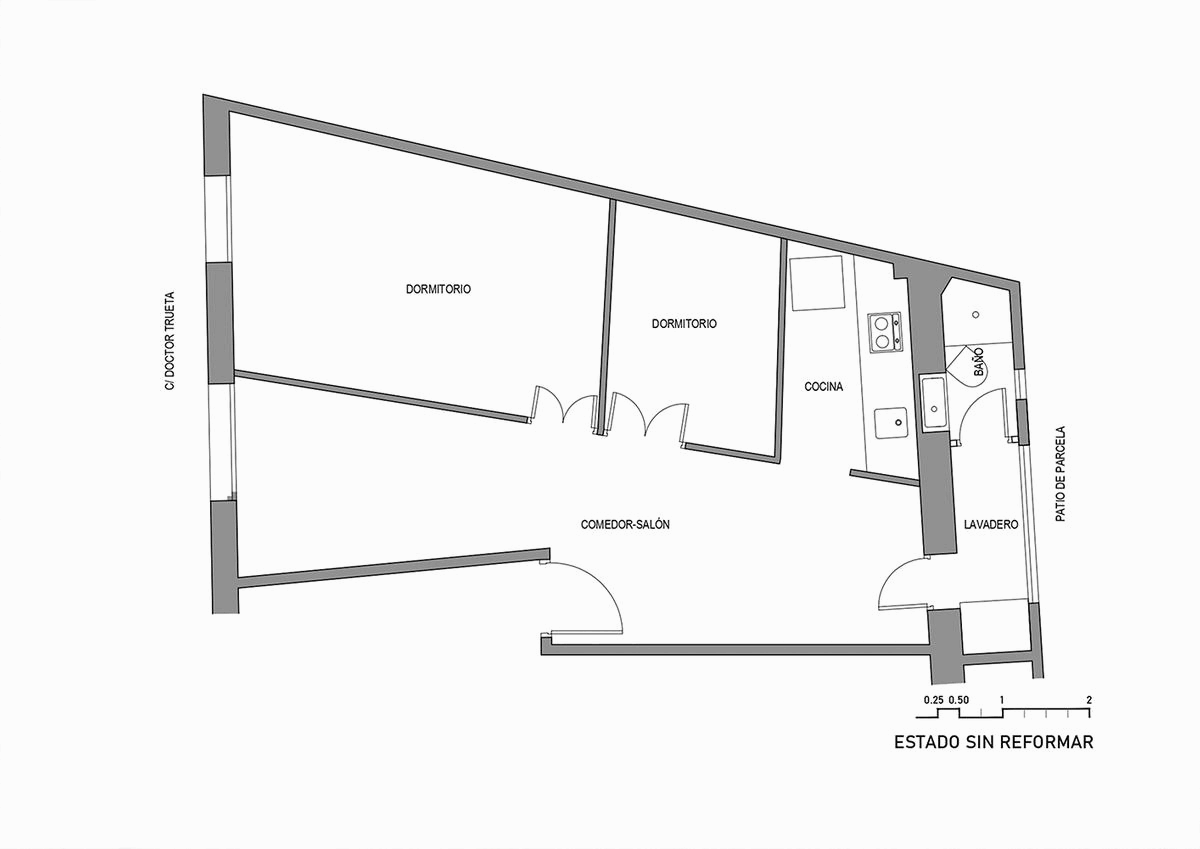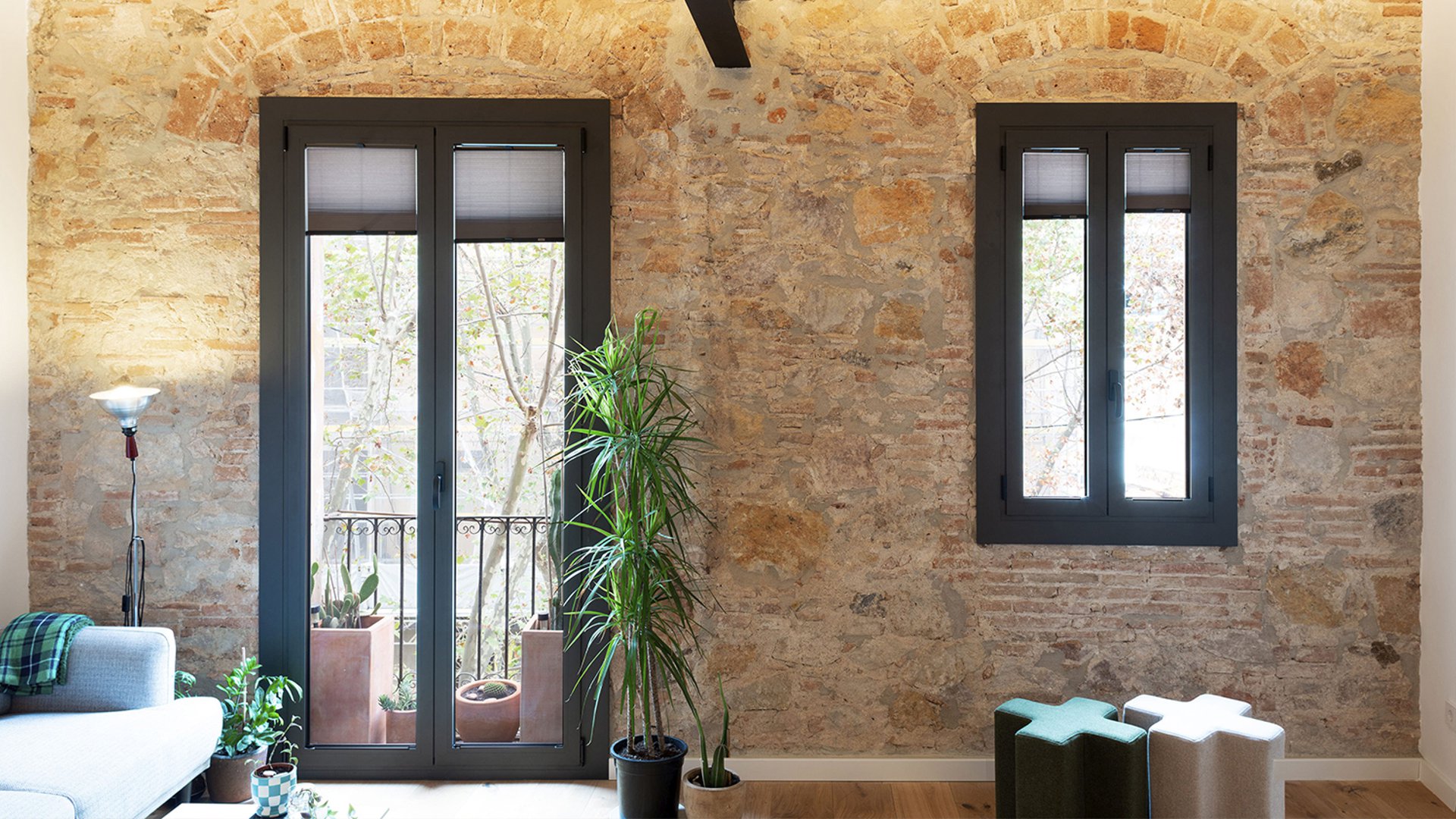
DOCTOR TRUETA
In DOCTOR TRUETA, we find an early twentieth century apartment with a very poor configuration: The living room was no more than two meters wide, which confined its dwellers to a somewhat claustrophobic space in which to develop “social” life.
The kitchen and bathroom were close to the limit of habitability, due to their reduced spaces and non-existent equipment.
Improvised electrical installations produced high electromagnetic pollution, while inefficient carpentry meant that all the thermal inertia of the walls was wasted through the openings.
The spatial reconfiguration required a structural reinforcement that would allow us to demolish the partition walls without the risk of movement on the upper floors by knocking down partition walls that after so much time had become part of the structural function, acquiring load.
The project strategy was to achieve an open space in half of the floor facing the facade, demolishing the partition walls and getting the “social” room to occupy the entire width, facing the street and facing south.
In the back half, we located bedroom and kitchen. Both ventilate through the gallery of the rear facade, reconfigured and converted into a bathroom and laundry room, resolved in three independent spaces.
Underneath many layers of paint and plaster, there were hidden stone walls worth showing. Above false plaster ceilings, the wooden beams and flat brick beams, also asked to come to light.
By exposing them, these materials express the age and history of the house, the building and the typical constructions of this industrial district. This patina of wear and tear adds to the space the experience of time. And the ambient lighting design emphasizes its beauty.
The rest of the materials chosen are silent, minimal, to dialogue with the essential beauty of the pre-existences, in an act of gratitude and accompaniment.
Location: Poble Nou, Barcelona
Typology: residential
Status: completed (2022)
Activities: project, project management and construction management.
Area: 50m2
Photography: Valentín Hincû
